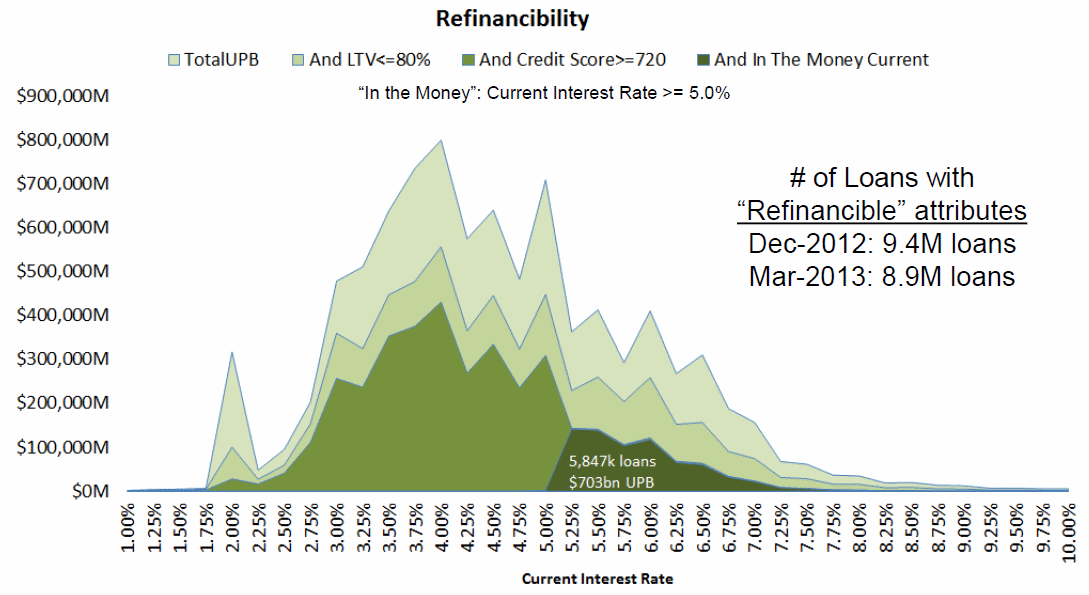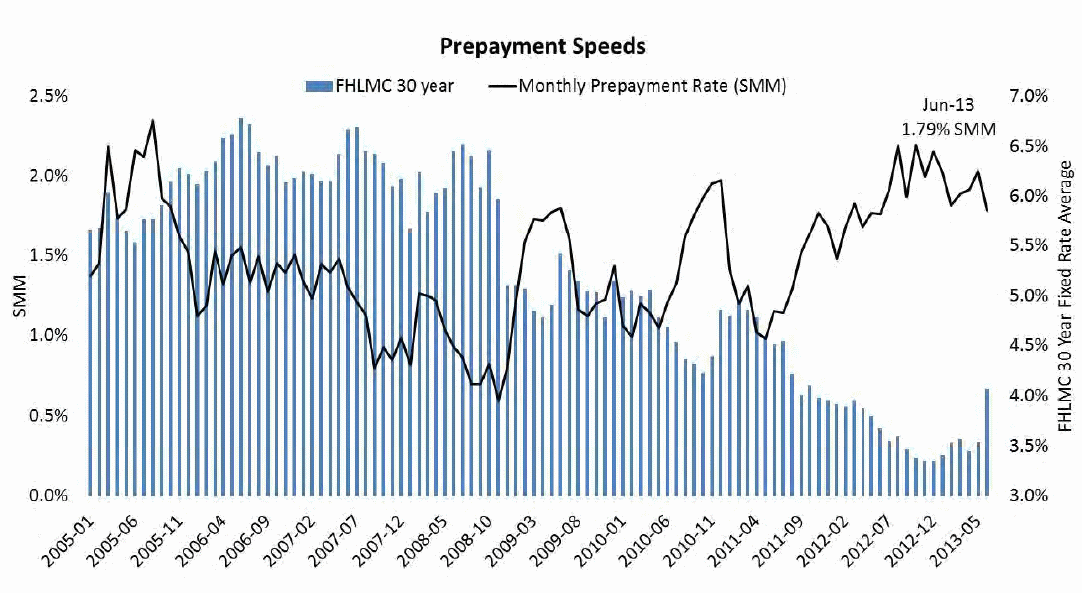The headline news from the Lender Processing Services (LPS) Mortgage Monitor Report for June, that early mortgage delinquencies had surged 10 percent during the month, was released two weeks ago in LPS's regular "first look" at its monthly data. The full report, released this morning, added some details to that announcement.
The sudden increase, which LPS Applied Analytics Senior Vice President Herb Blecher called "representatives of a documented seasonal phenomenon," brought the national delinquency rate from 6.08 in May to 6.68 percent in June, an increase of 9.9 percent. The rate is still down 6.9 percent from the beginning of the year and 6.5 percent from June 2012. The rate of foreclosures and of seriously delinquent loans continued their decline.
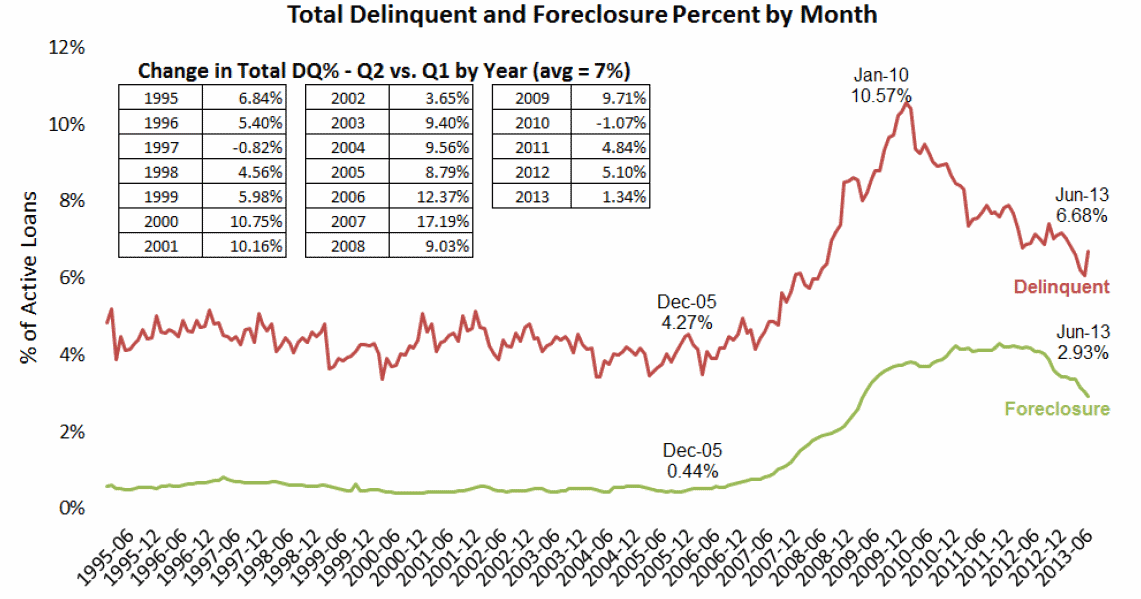
There were 700,000 newly delinquent loans in June and they were widely dispersed geographically with every state but Vermont, for which no information was supplied, experiencing double-digit increases. The biggest jump occurred in two western states - Colorado which was up 31,7 percent and Utah with a 29.6 percent increase in 30+ day delinquencies.
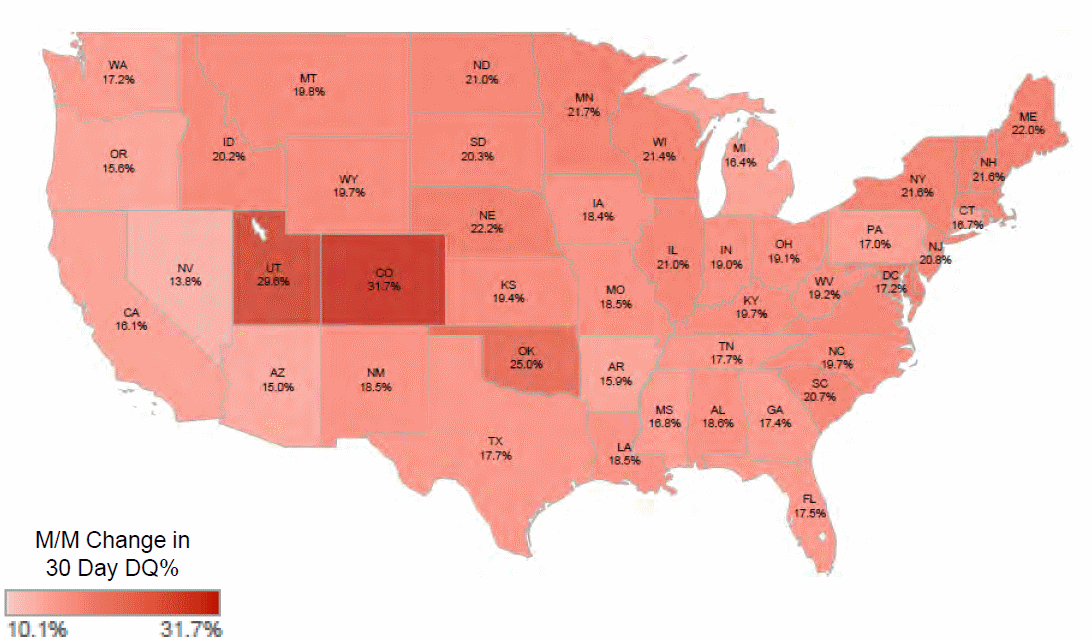
Delinquencies increased for both fixed rate and adjustable-rate mortgages. The former jumped 19 percent from May and the latter 18 percent.
Blecher explained the seasonal nature of the increase. "Over the last 18 years, similar changes occurred in June for all but four of those years. And this month's increase was felt across all 50 states -- from a roughly 14 percent month-over-month rise in 30-day delinquencies in Nevada to a nearly 32 percent upswing in Colorado. Additionally, we examined the data to see the effect of recent increases in interest rates on delinquency rates and found no significant impact thus far. Adjustable-rate mortgages (ARMs), which one would expect to be impacted most by such interest rate changes, actually saw delinquency rates rise at a lower relative rate than those of fixed-rate mortgages.
"Of course, focusing solely on month-to-month shifts in mortgage performance can be like tracking the stock market on a daily basis," Blecher continued. "You may see periodic spikes and dips, but without a longer-term perspective, you lack a clear picture of how the market is actually performing. Though June's 9.9 percent spike was indeed significant -- and a reversal of five consecutive months of declines -- on a quarterly basis, the rise was much more moderate than the historical average. Since 1995, delinquency rates have risen from Q1 to Q2 in all but two years, with an average 7 percent increase. By comparison, the 2013 Q1 to Q2 increase was just 1.34 percent."
There were also fewer loans that went from delinquent to current, that is "cured" in June. The number of loans in early stages of delinquency that cured during the month fell to a five year low and the cure rate for more seriously delinquent loans was also down.
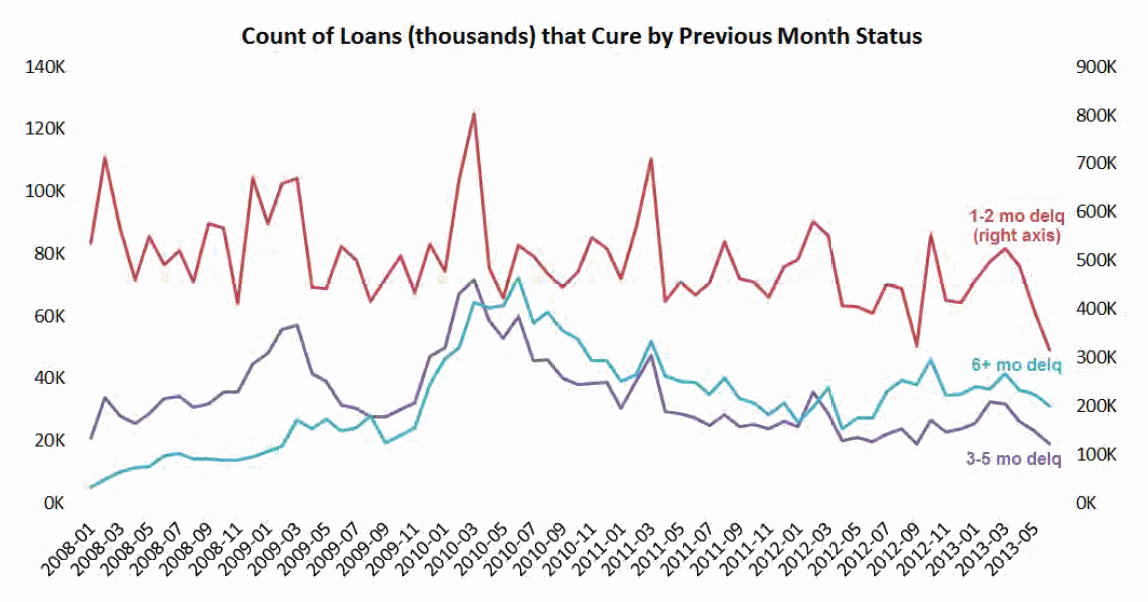
LPS also reported that the serious delinquency rate (90+ days) was down 1.5 percent form May to June to a rate of 5.62 percent. This was 22.3 percent below the rate in June 2012. Foreclosure starts dropped from 116,812 in May to 109,042 in June; there were 173,556 starts in he previous June.
The rate of foreclosure sales in states using a judicial form of foreclosure has been increasing for three years but remains below half the rate for foreclosures in non-judicial states. Consequently, while the backlog of foreclosures is clearing, inventories in judicial states are down only 26 percent from their peaks against a drop of 50 percent in non-judicial states.
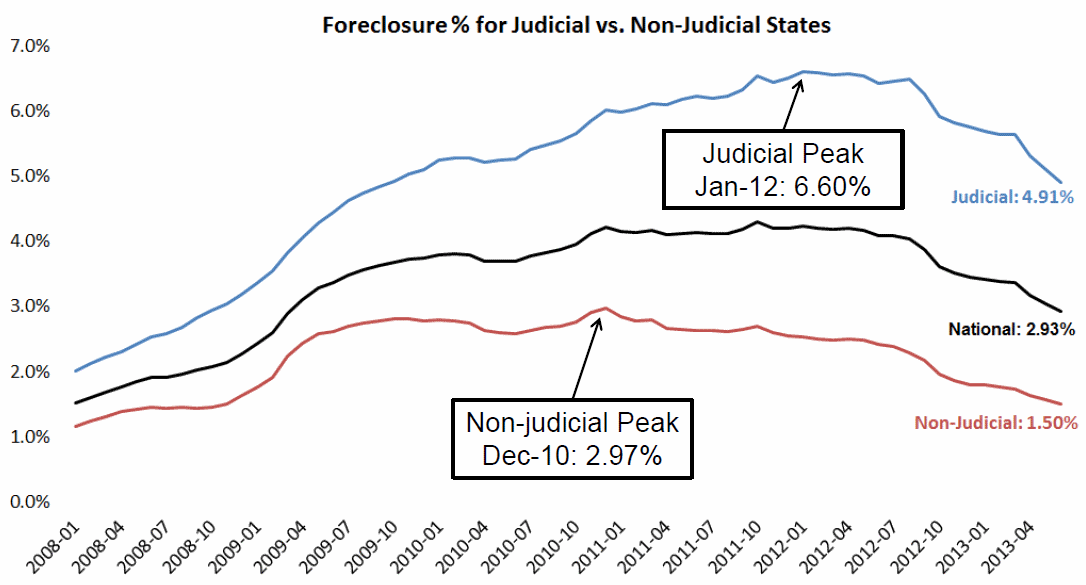
Increasing mortgage rates are already having an effect on possible refinancing opportunities. LPS examined the pool of potentially refinaceable loans and found that, despite the improved equity situation brought about by rising home prices nationally, fewer loans have refinancible characteristics at the new rates. Many homeowners in fact now have lower existing rates than those currently available. Approximately 12 percent of active loans, about 5.9 million, fit broad-based refinancible criteria, down from 8.9 million in March of 2013 when rates were at historic lows. Still, while prepayment rates (historically a good indicator of refinance activity) had declined 12 percent in June in the face of rising interest rates, they were higher than when interest rates were last at this point back in 2011.
